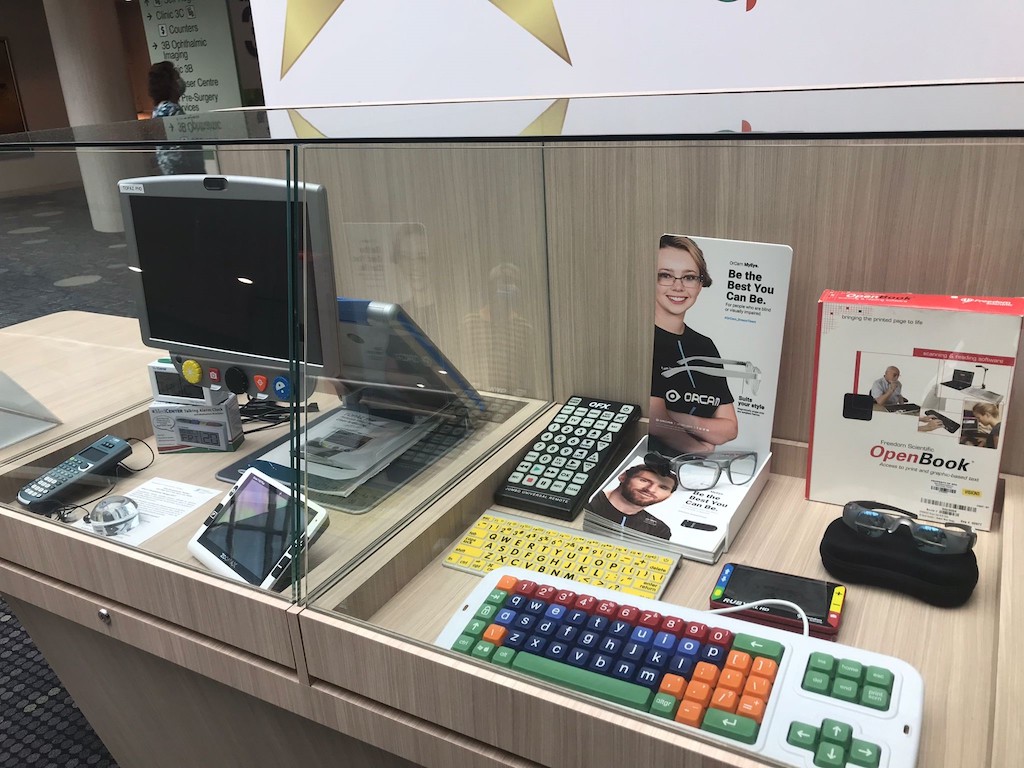Loan library for those with low vision
SNEC patients can try the various assistive technology devices before purchasing the right one for their needs.

The Singapore National Eye Centre (SNEC) officially launched its Smart Technology Active Ageing Resource (STAAR) corner at SNEC (Level 3) for those with low vision.
Low vision refers to vision impairment that cannot be improved by glasses, medication or surgery. A person with low vision can have a variable extent of vision loss ranging from reduced vision clarity, difficulty seeing in the dark and/or glare sensitivity which affect his/her functioning in daily living. It is estimated that 1.5 percent of Singaporeans are living with low vision. Low vision can happen at any stage in life but it is more common in seniors due to age-related eye conditions. However, those with low vision have remaining useful vision that can be rehabilitated to help them continue leading a life of independence.
Speaking at his opening address at the event, Professor Wong Tien Yin, medical director at SNEC, said: “Increased rates of chronic eye diseases prevalent among the elderly may result in irreversible visual impairment, leading to significant healthcare burden in Singapore in years to come. Despite the digitalisation of the healthcare landscape and advent of telemedicine which aim to improve healthcare quality, access and cost-effectiveness, a digital divide exists with the elderly and those with visual impairment.” They also may not have the skills and knowledge to access this technology, he explained.
To reach a wider audience and educate people about this technology, the STAAR corner features an assistive technology (AT) loan library established in collaboration with local disability-focused non-profit organisation SPD to offer trial and loan of assistive technology devices to SNEC patients with visual impairment. These devices include video magnifiers, dome magnifiers, screen enhancement software, talking scientific calculators, Braille tablets, high contrast keyboard overlays, head-mounted magnifying glasses, jumbo-sized universal remote controls, and more. These loans and trials enable patients to try the products and then make informed decisions on the best type of assistive technology for their needs.
 Also available is the OrCam My Eye, a wearable device developed in Israel that can read text, recognise faces and identify products. It was sponsored by Mandarin Opto-Medic Co Pte Ltd, and presented to SNEC by the Embassy of Israel in Singapore. There are also plans in the near future to utilise artificial intelligence in the treatment and management of patients with visual impairment.
Also available is the OrCam My Eye, a wearable device developed in Israel that can read text, recognise faces and identify products. It was sponsored by Mandarin Opto-Medic Co Pte Ltd, and presented to SNEC by the Embassy of Israel in Singapore. There are also plans in the near future to utilise artificial intelligence in the treatment and management of patients with visual impairment.
Since the soft launch of the AT loan library in end March 2021, 92 patients have explored the use of these assistive technology devices during their low vision consultation, with 16 of them loaning the devices home.
The STAAR corner is open to Singaporeans and PRs who are existing SNEC patients with an ophthalmologist consultation within the last 18 months. Those patients who wish to loan the devices will be assessed for suitability by one of SNEC’s low-vision optometrists, and they will be taught how to use the devices. The maximum loan period is three weeks with a late charge of S$20 per week imposed.
Rita Leong, who lives alone and has low vision, has adopted the use of assistive technology in her daily life. “My tablet is a great help to me. I use it to text my family who live in the US and Australia. I also use it to attend Mass first thing on Sunday mornings,” shared the 91-year-old. “I would encourage others who have low vision to use this too.”
Joyce Wong, director, Centralised Services at SPD, added: “There are many forms of assistive technology devices in the market today, but many visually-impaired people and elderly are either unaware about them or unsure about how to go about incorporating them in their lives. In setting up the AT loan library together with SNEC, our aim is to reduce the barriers to adoption of these devices, and we hope more can stand to benefit from the various resources available that would help them live more independently.”
** To view the devices on loan, go to HERE.

0 Comments